
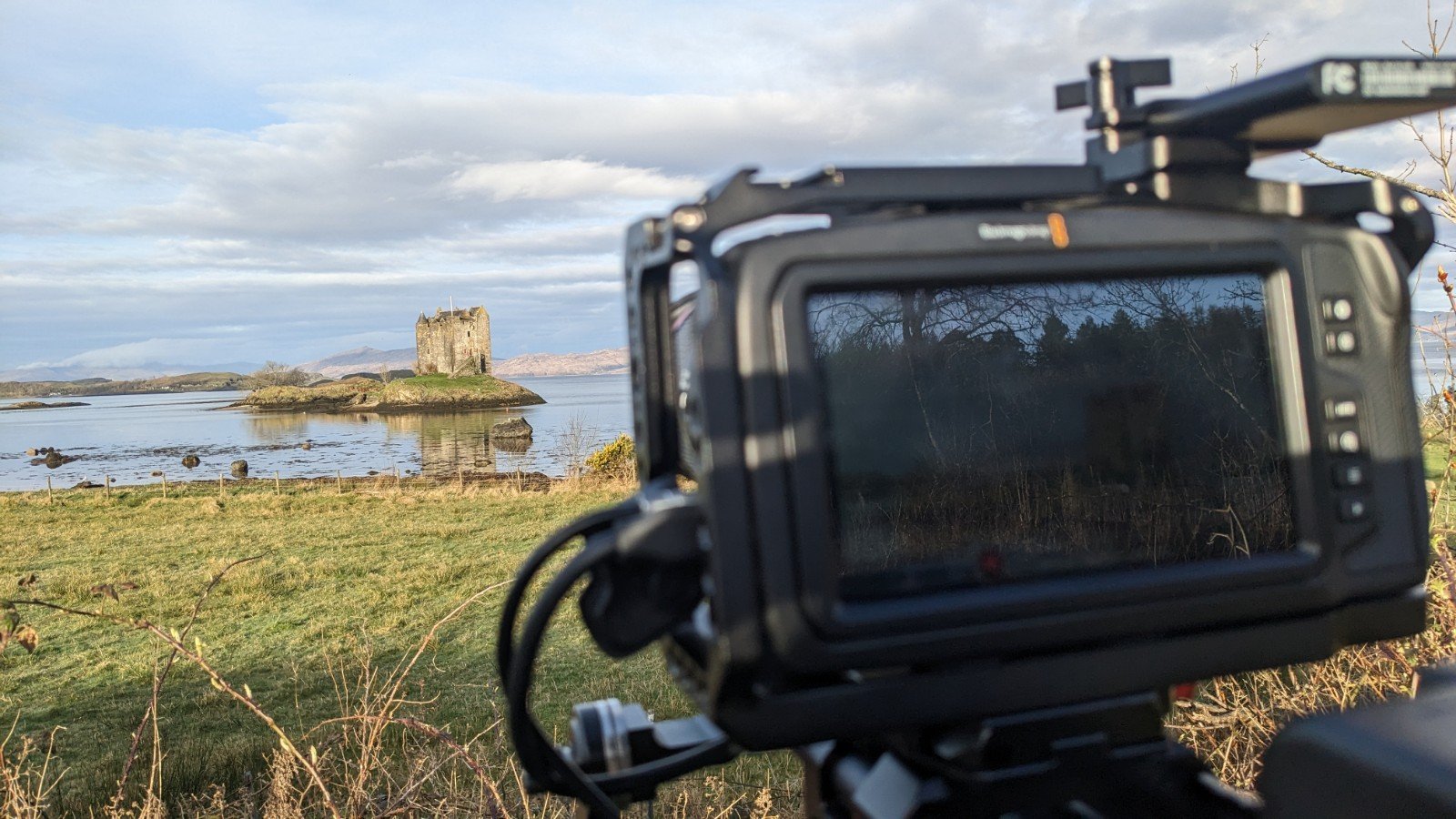
We recently completed our incredible filming trip as part of our ongoing partnership with High Life Highland.
As part of our commission to bring the new Tapestry of the Highlands and Islands to life using AR, film and animation, Curio’s Visual Content Producer Simone and Graphic Designer/Production Assistant Miriam set out on a one-week trip.
They travelled from Inverness and Brora in the East over Ullapool, Glencoe and the Isle of Mull on the West coast, to film for a series of short documentaries that will accompany the tapestry panels, giving context and insight into their creation.
Read on to discover more about the trip and the fantastic Highlands and Islands of Scotland.
Planning the Trip
Part of our digital interpretation involves creating a series of short films which will show locations that have inspired imagery within the tapestry, but which also introduce some of the talented stitchers and artists who have designed and produced the panels.
Keen to feature the Highlands’ and Islands’ cultural and natural beauty, we meticulously began our research and trip planning several months in advance. We contacted stitching groups, heritage centres, museums and local textile producers.
Through preliminary conversations, we found stories about kelp collecting and herring fishing around Gairloch; the East’s historic coal industry; mythical creatures all over the Highlands; and the stunning weaving practice at Ardalanish on the Isle of Mull.

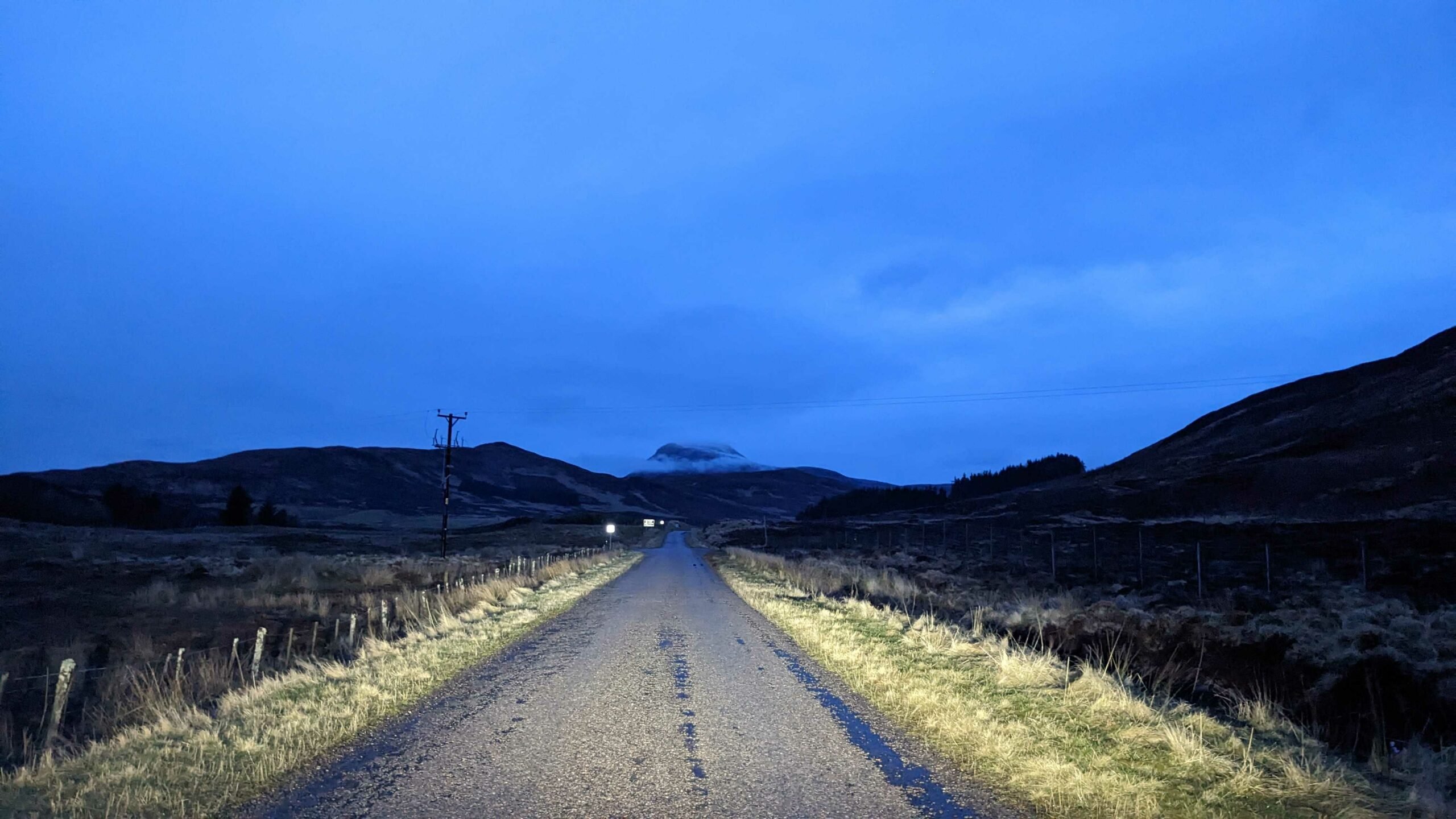
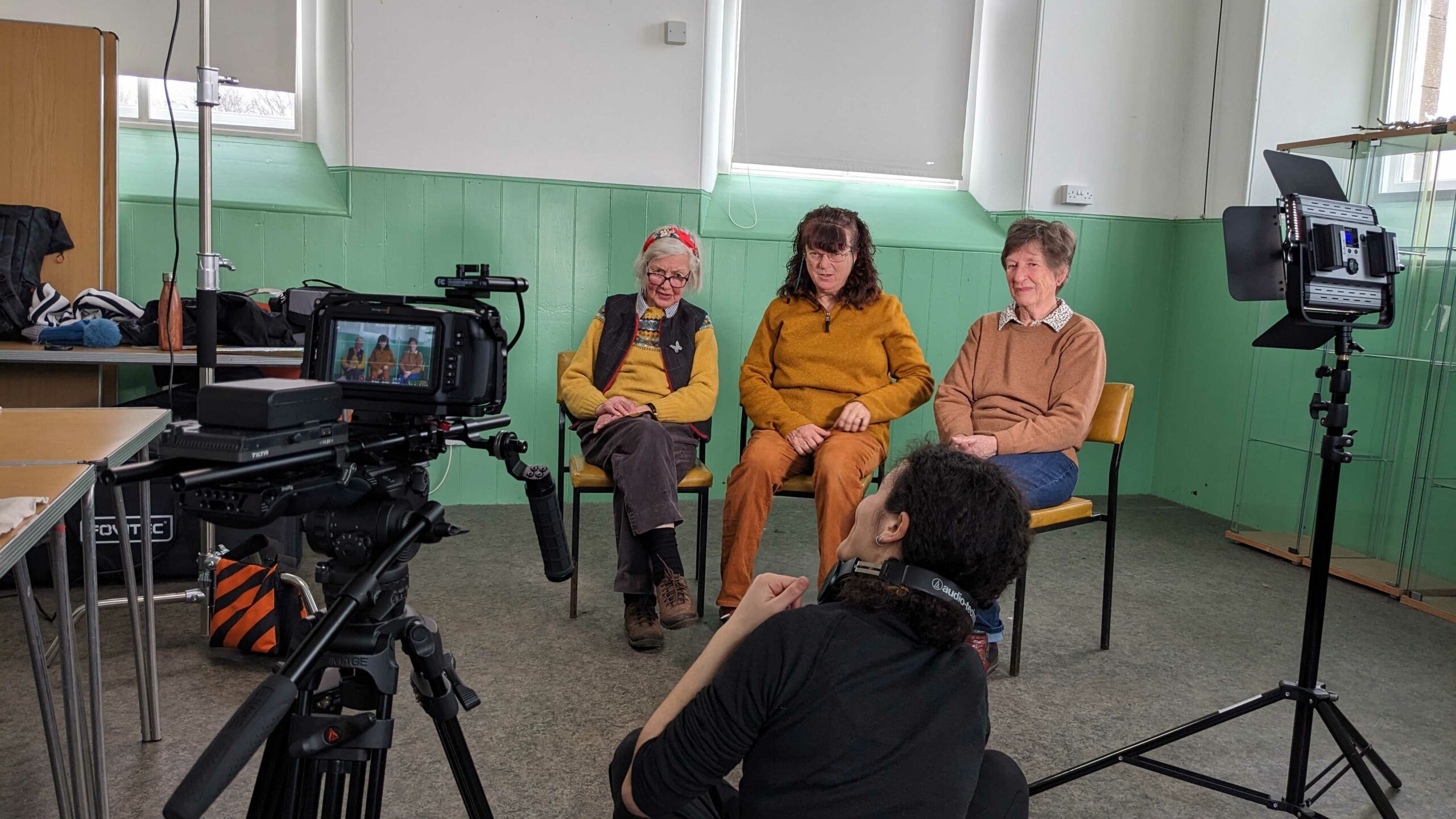
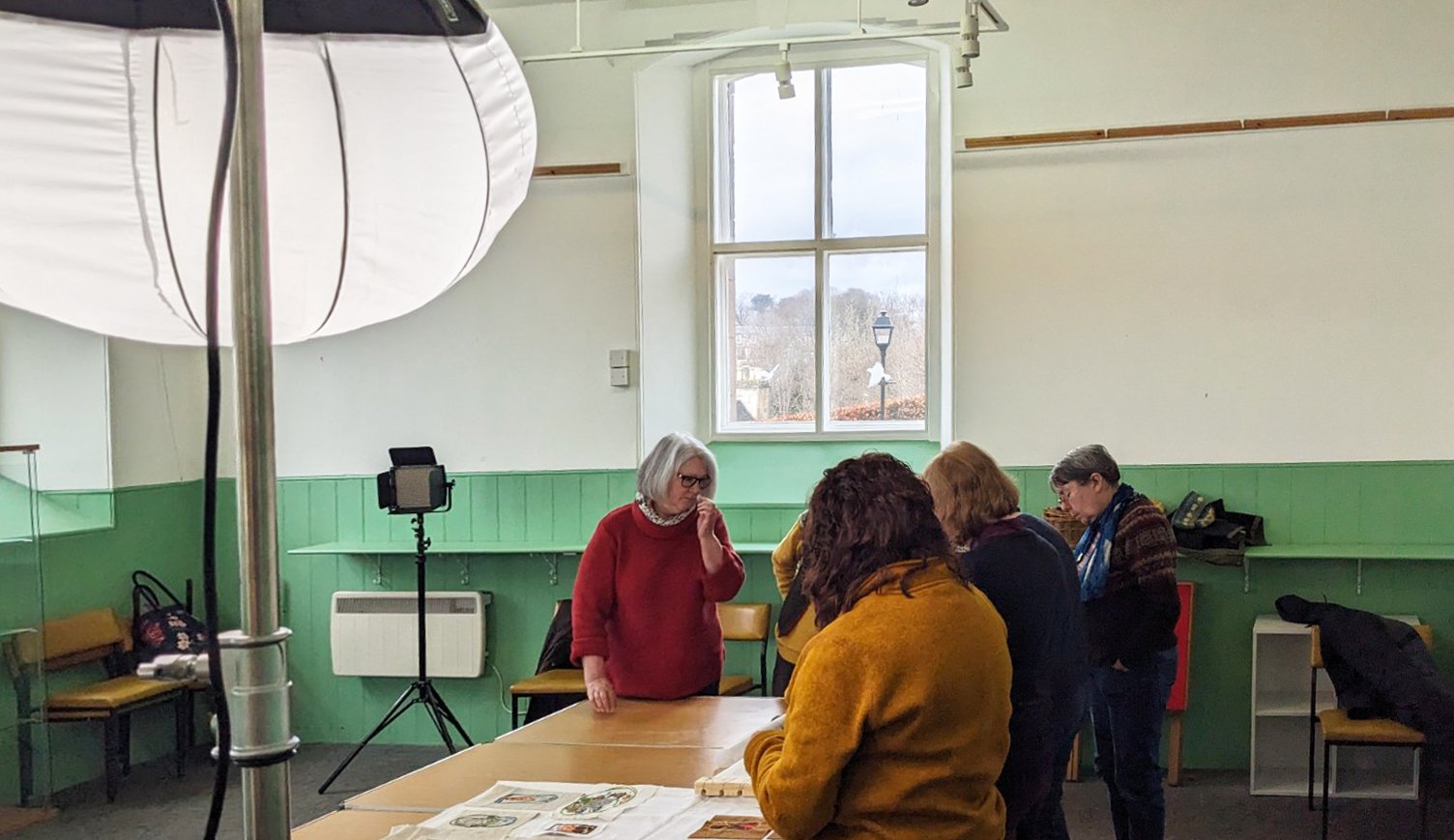
Day 1
Our first stop, after flying from Bristol to Inverness, was Drumnadrochit where we interviewed the first of many stitching groups we had the pleasure to meet.
Most of the groups are composed of volunteers who have worked hundreds of hours to complete the panels. Some of them are experienced stitchers and others are learning, or returning to a skill they haven’t practiced in a long time.
Some of the stitching groups meet in social venues and spend their time sharing their skills, stories and experiences. Alternatively, women would take the tapestry panels home, do their bit, and pass it to the next person – like a relay! In both cases, most stitchers told us that they found a sense of community and meditative exercise in this activity.
Most importantly, during our trip, we wanted to capture some authentic characters in our videos and sound recordings. Accordingly, we made sure everyone felt comfortable before easing into sharing their individual experiences naturally through informal conversations.
Day 2
On our second day, we drove up along the East coast and stopped in different relevant locations. We learnt more about the history and heritage of the area with the help of the historian David Alston in Cromarty, and Dr Nick Lindsay in the Brora Heritage Centre.
As we departed from these most inspiring meetings, we made our way to Dornoch to see a lively group of stitchers in a community centre. It was amazing to observe the group’s eagerness and enthusiasm, and all the technical knowledge visualised through myriads of stitches.
All tapestries display a great wealth of colourful shapes and folkloric and local history motives.
Each stitcher also works on a so-called ‘journey stone’, a smaller piece of stitching that is designed by the stitchers themselves. We heard so many fascinating anecdotes about them throughout the journey, with some depicting endemic flowers, local historic landmarks, ancient instruments, family history or contemporary themes.
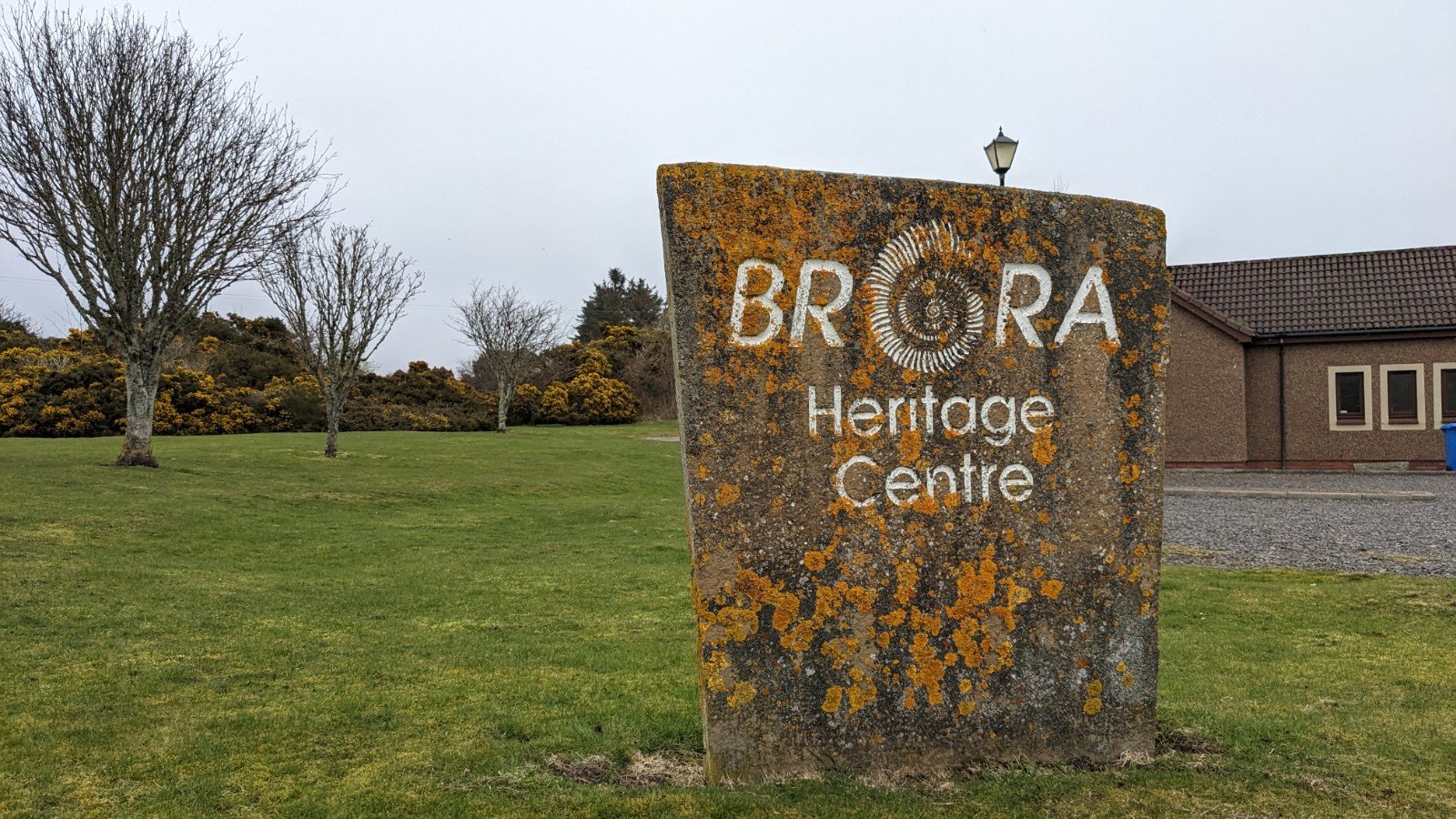
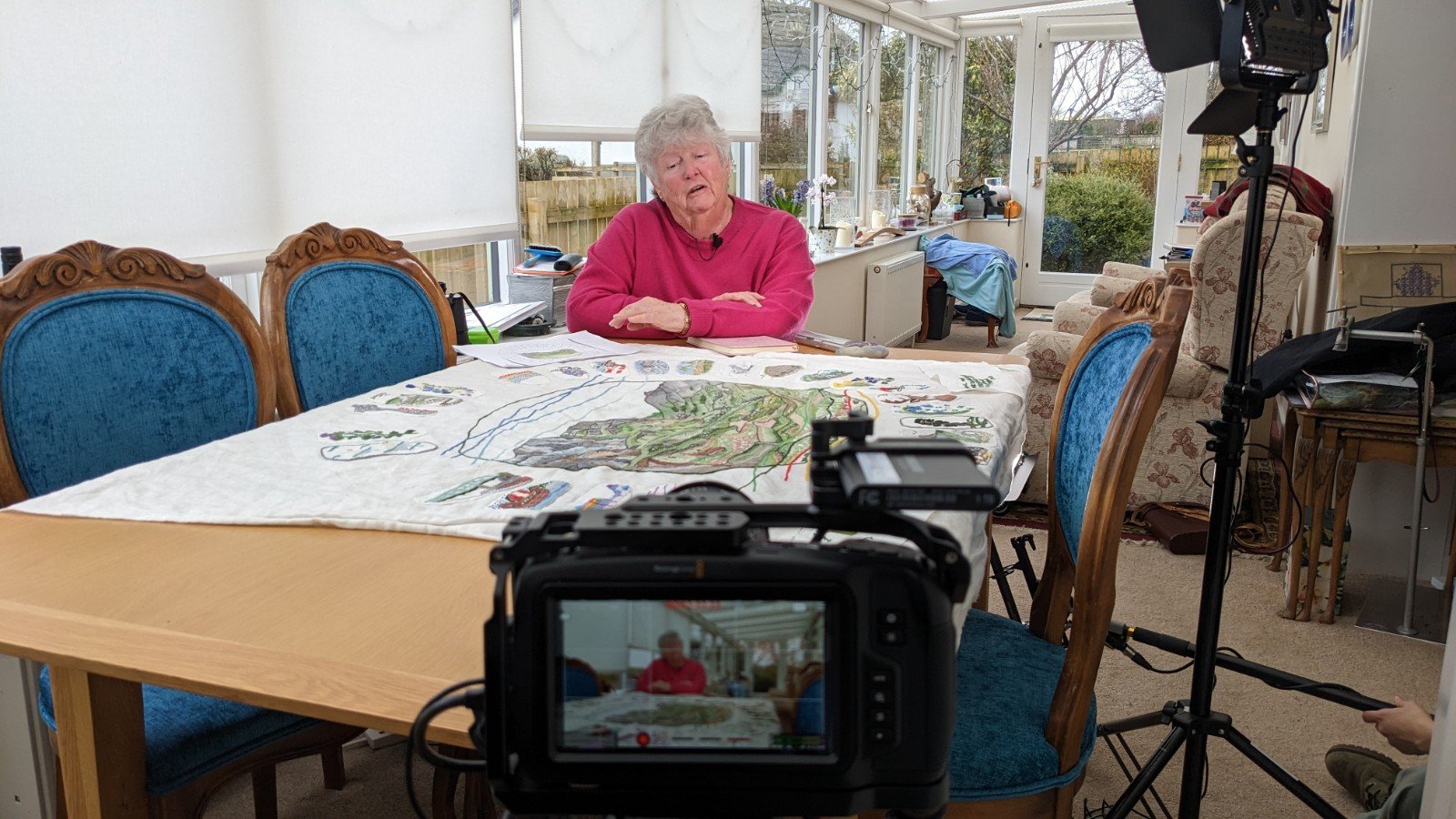
Day 3
On our third day, we drove over to the West Coast of the Highlands.
We started our day in Ullapool, where we interviewed Helen Lockhart from Ripples Crafts who explained her stunning yarn dyeing methods to us. Her yarns are widely featured within the Highlands and Islands tapestries.
Following that, we went to the Gairloch Museum, a former nuclear-bomb-proof bunker that was renovated and opened in 2019, with galleries showcasing the history, culture and natural heritage of the North West Highlands. There we interviewed local fishermen, and several stitchers from the Gairloch Reflectors group to marvel at their complex double-panel tapestry, displaying two floating heads with waving long strands of textured hair.

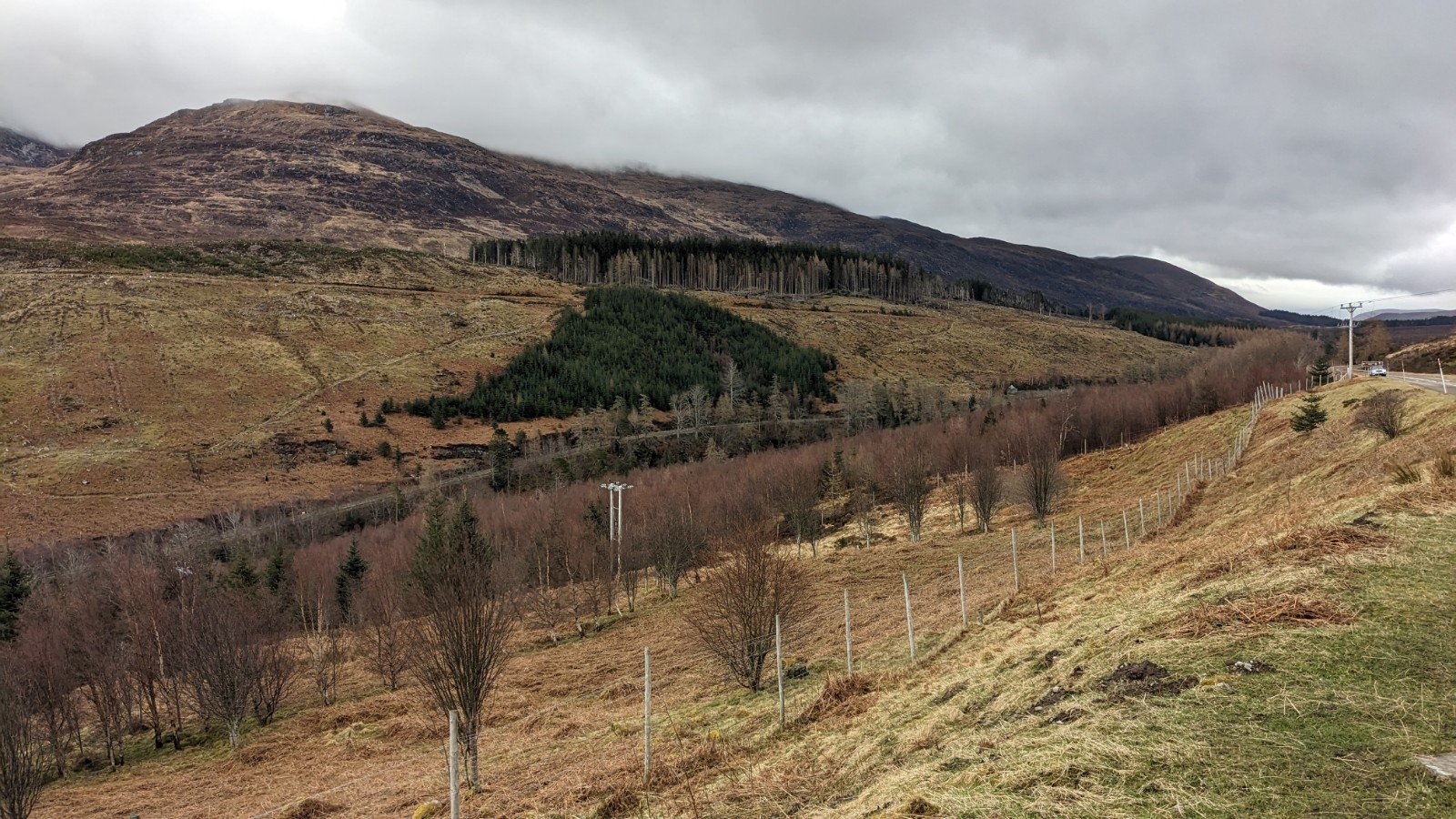

This journey offered a great opportunity to meet genuine, passionate characters who enjoy the beauty of community, coming together to apply a delicate and poetic craft. I couldn't be more grateful for the warmth we were welcomed with and I'm excited to see the stitchers' vivid stories come to fruition within our films.
Simone Einfalt, Visual Content Producer
This journey offered a great opportunity to meet genuine, passionate characters who enjoy the beauty of community, coming together to apply a delicate and poetic craft. I couldn't be more grateful for the warmth we were welcomed with and I'm excited to see the stitchers' vivid stories come to fruition within our films.
Simone Einfalt, Visual Content Producer
Day 4
Leaving Gairloch, we carried on South via Lochcarron to Glencoe. If you haven’t been there you should definitely go.
The Three Sisters mountain chain (the central feature in the Nether Lochaber group’s panel) is most stunning in the early morning hours and at this time of year; the landscape of Scotland – in all its variations – carries soft tinges of brown from dry grasses and ferns, to the gentle purple of springing birch trees, with the refreshing whitish-green of ruffled lichen complementing each forest.
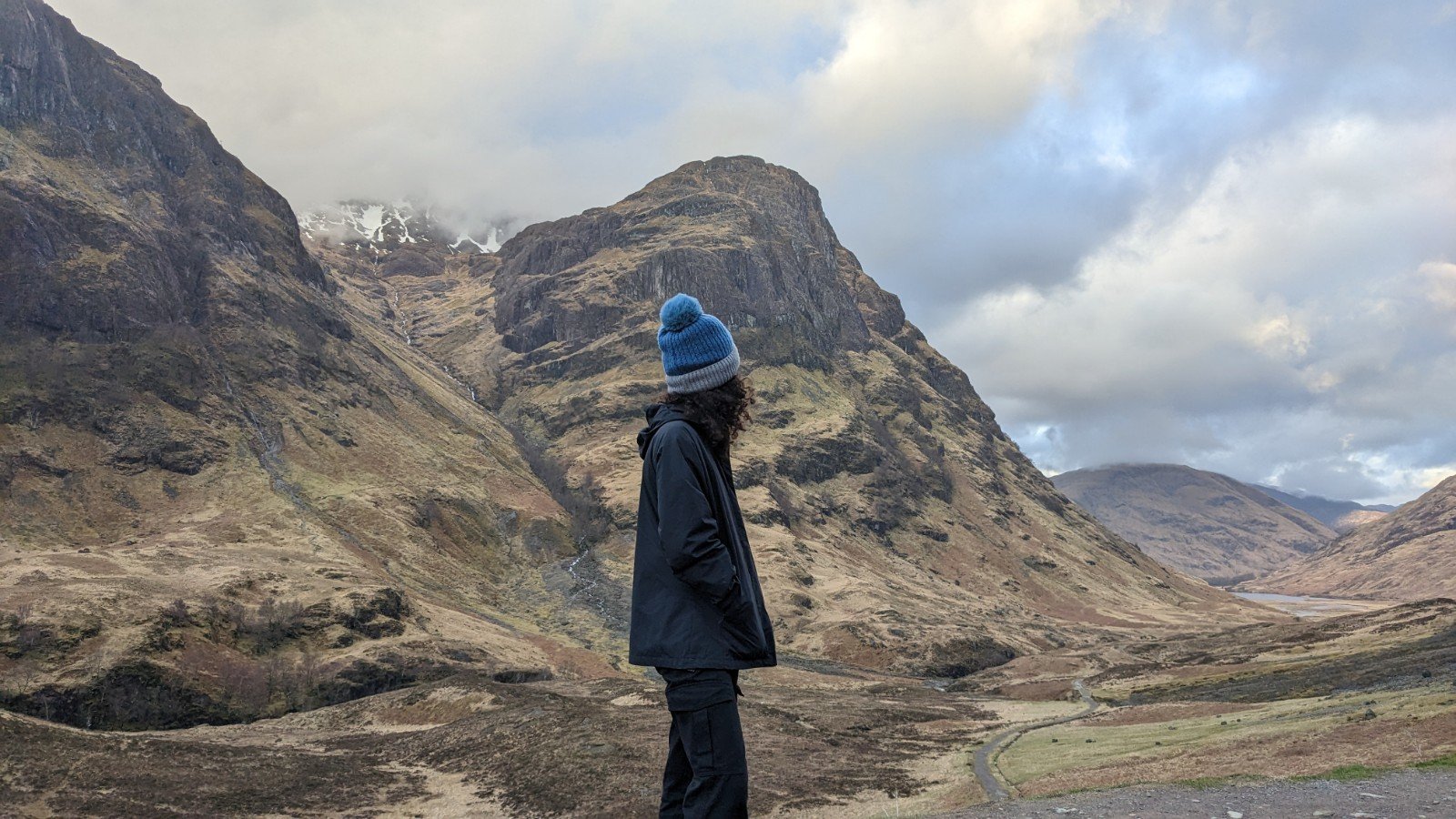
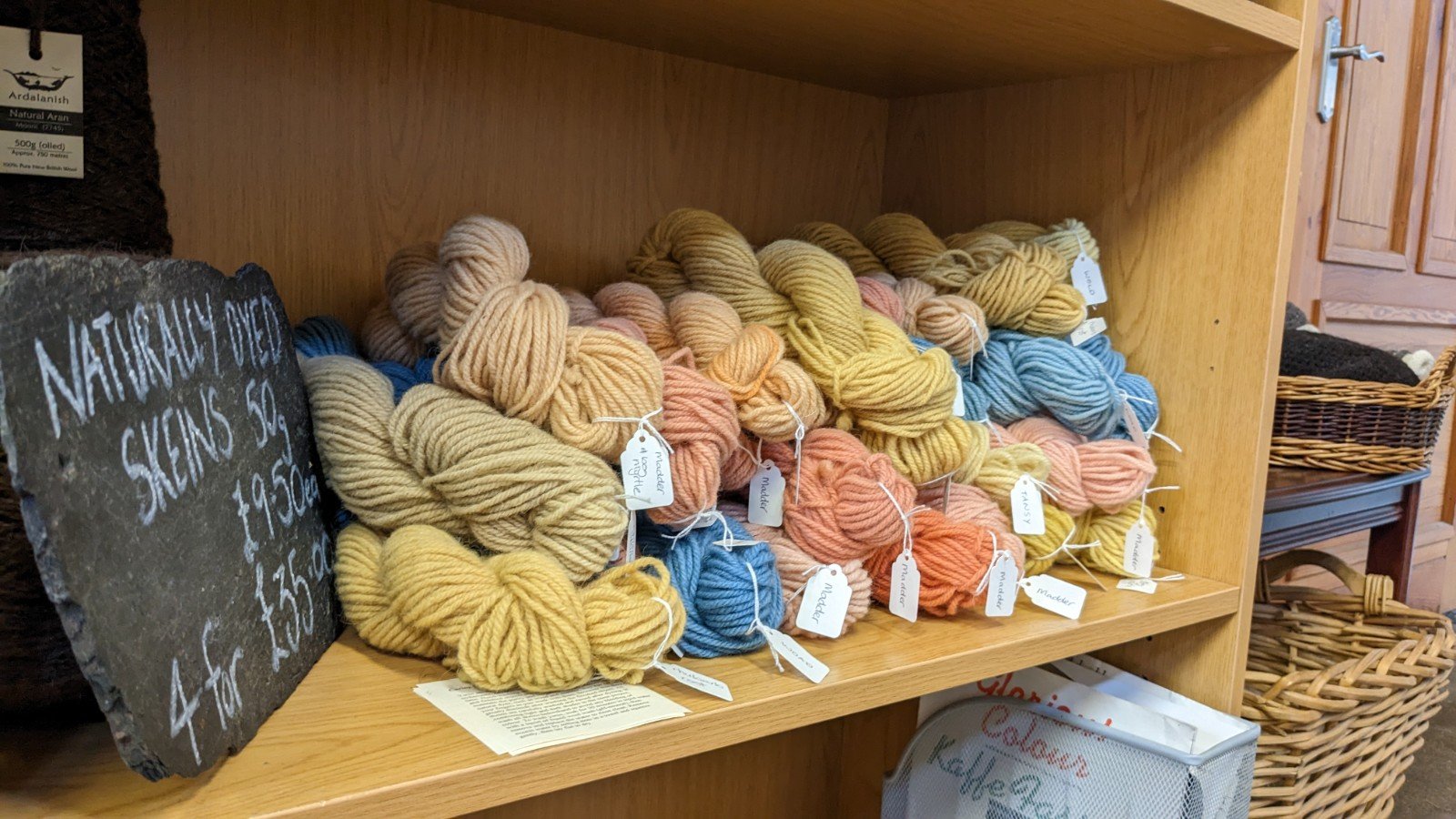

Day 5
On our fifth day we went to the stunning Isle of Mull to visit the Ardalanish Weavers, a manufacturing place with high sustainability standards. Their small but incredibly resourceful and knowledgeable team uses local fleece and natural, on-season solar dying techniques to create beautiful yarn and tweed.
We spent quite some time there, enquiring about their range of tweed fabrics that are part of Oh Sew Mull’s Eagle tapestry panel, used in the bird’s elegant feathers.
We wanted to hear everything about the solar dying techniques head weaver Monica developed to yield some unique yellow and coral tones from herbs such as calendula or madder.
Did you know that Mull has a huge population of otters? We tried hard to spot one on our way back to Craignure from where we took a ferry back to Oban.
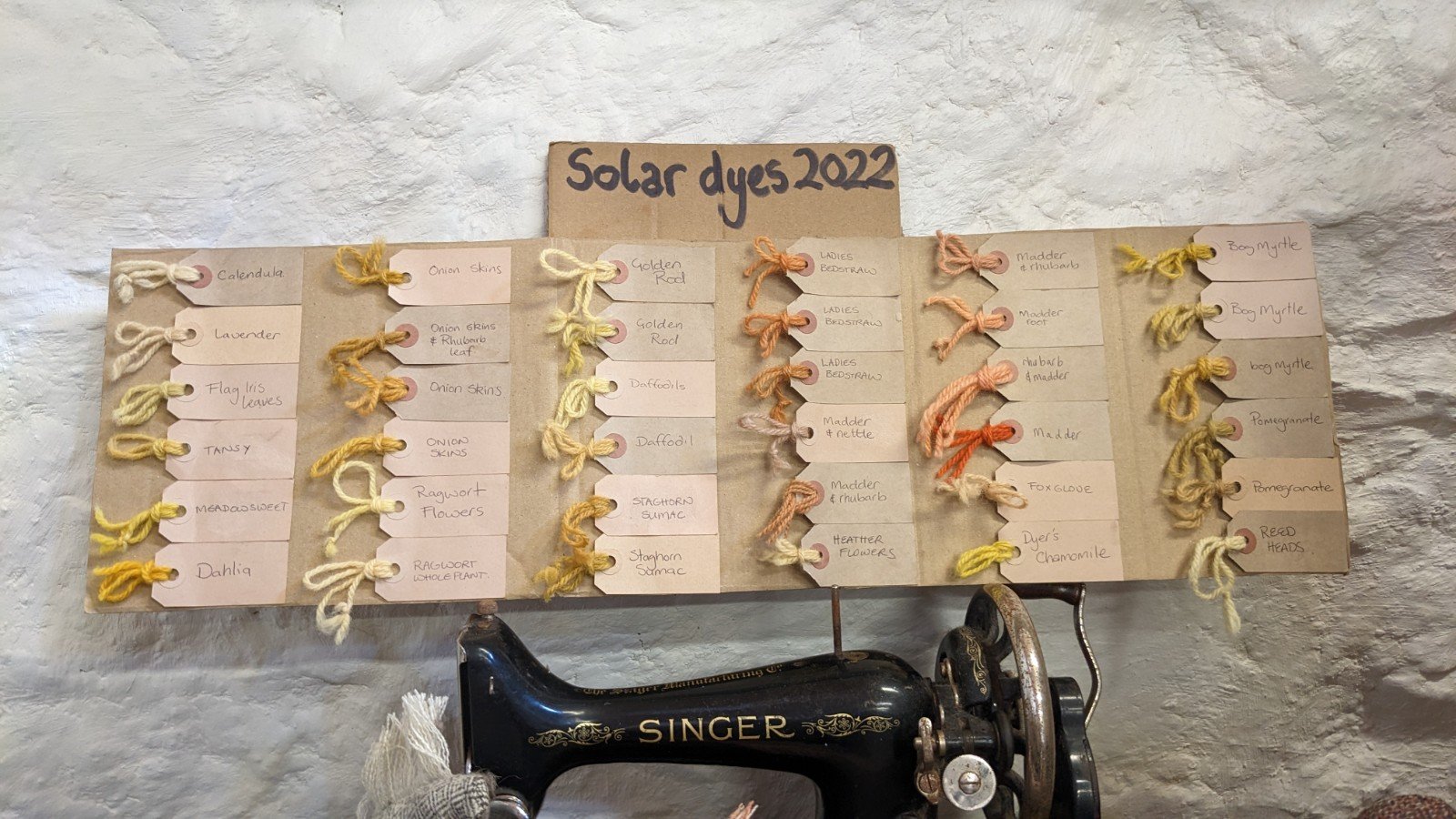
Day 6
For our last stop, we drove all the way via Loch Lomond and the Trossachs to the outskirts of Edinburgh, to visit the artist Andrew Crummy in his bright and spacious studio. After all the magic we’d seen during the last days, we were eager to gain more insight into the ideation process and motives of his tapestry designs.
Andrew worked hand in hand with technical stitching coordinator Kirstie Campbell and renowned historian Alistair Moffat, who both joined us for the interview. Enthused, he spread out his original designs on a large central table to highlight his favourite folkloric shapes and the process of colouring his designs, as well as the recurring floating threads that are like trails, leading from panel to panel.
Both Andrew and Alistair have previously worked together fostering high-level community engagement projects, like the famous Great Tapestry of Scotland and the Scottish Diaspora Tapestry.
Kirstie, who is an excellent stitcher herself, and very passionate about the project, was also part of the design process of the tapestries. Moreover, she is always busy coordinating the volunteers, the distribution of new yarns and fabrics across the wide-spread region and creating new inspirational How-To YouTube videos for the stitchers.
Alistair curated the content for the tapestries gathering local stories and all his knowledge of the region to inform Andrew’s visual work in the first place. We had a chance to speak with him about his vision for the project and are grateful for his excellent contribution.
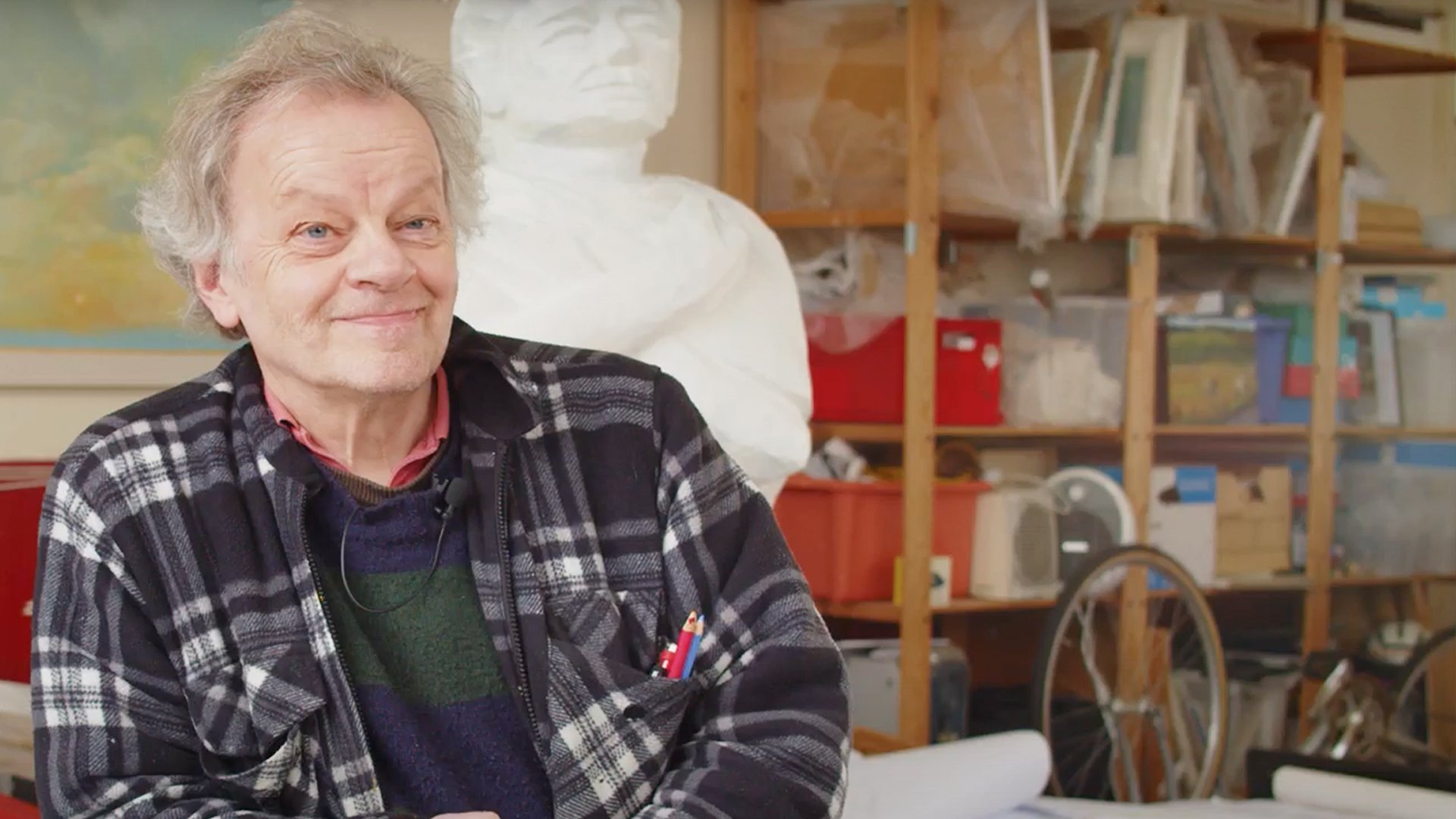
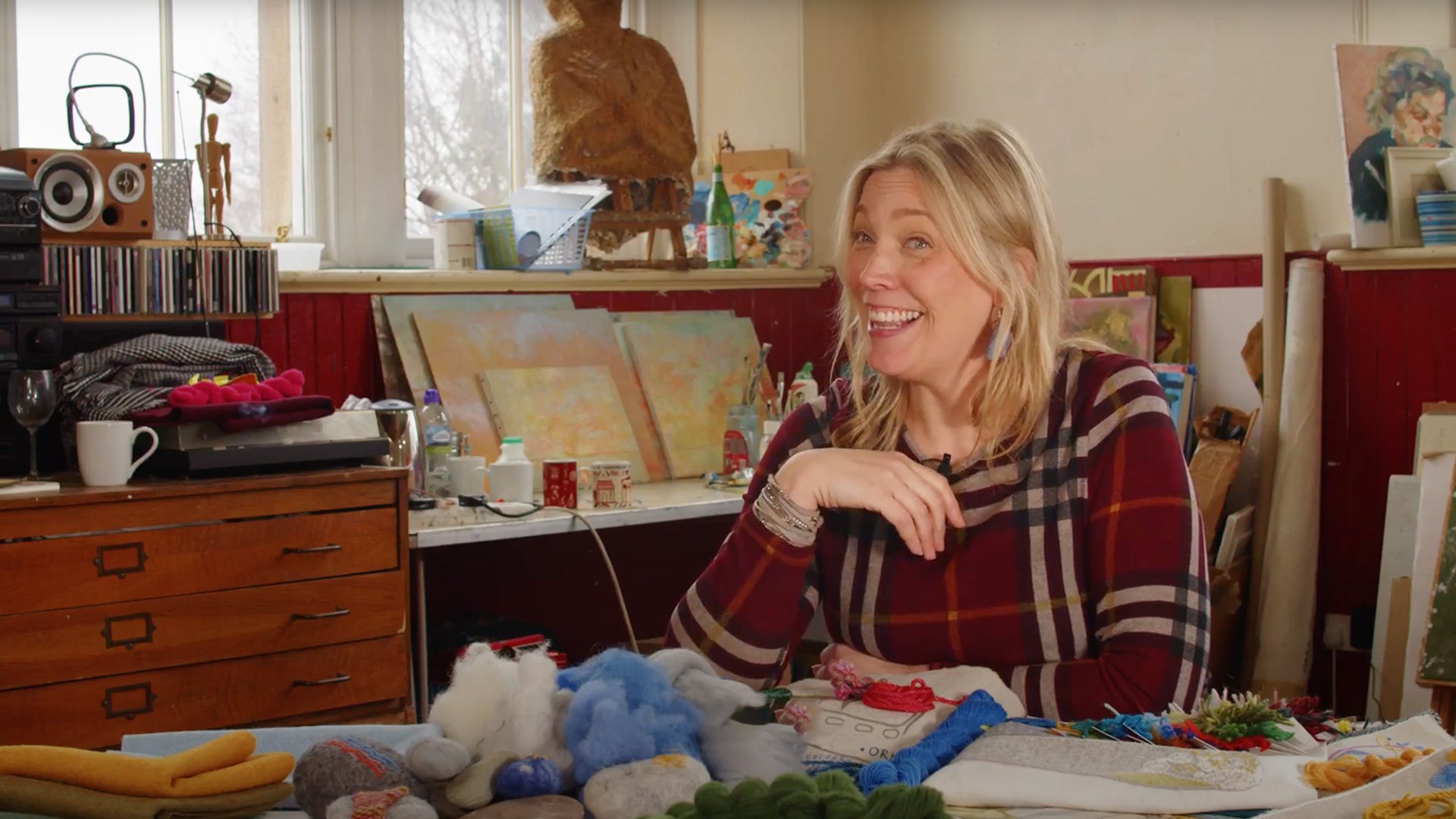
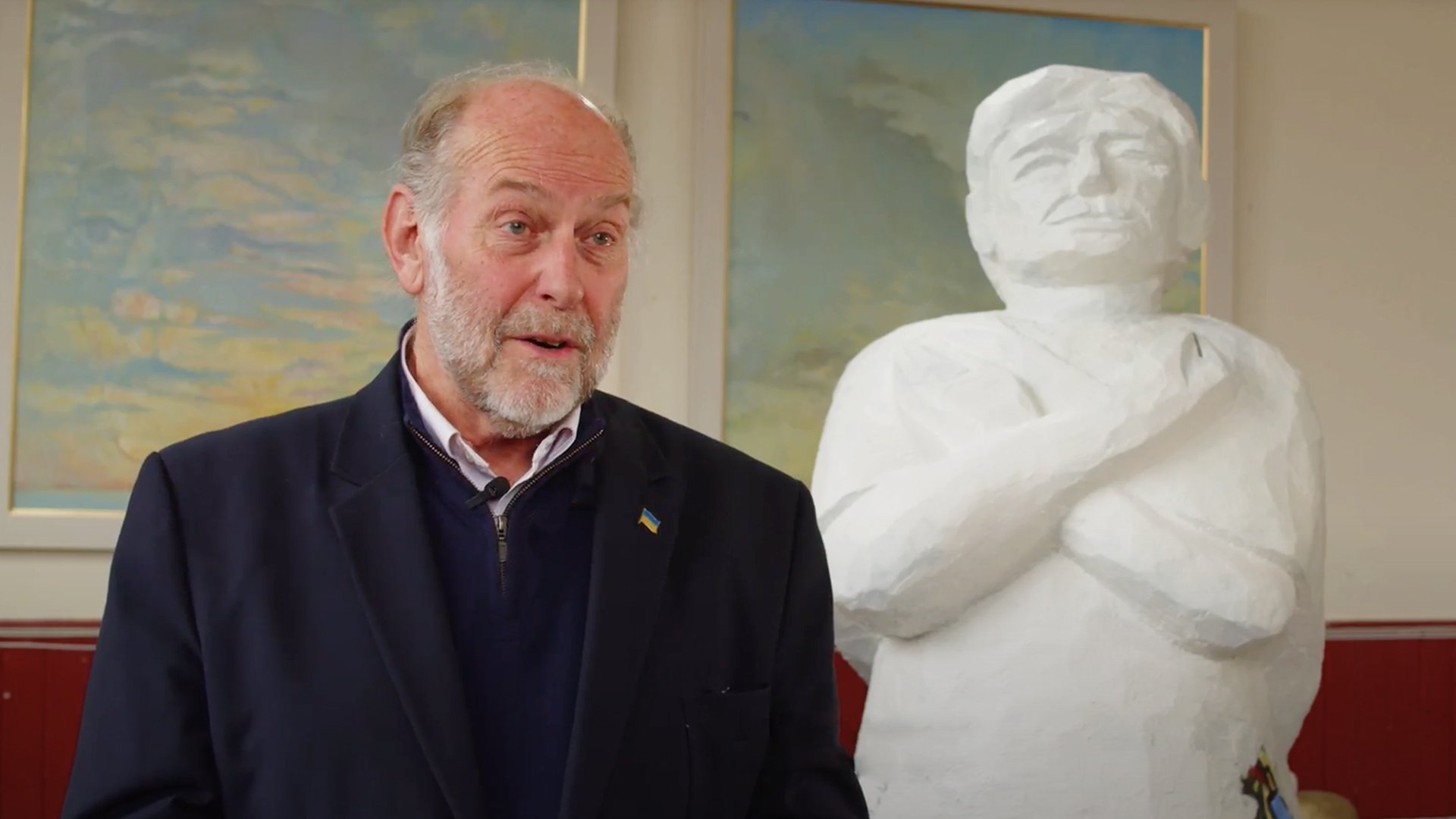

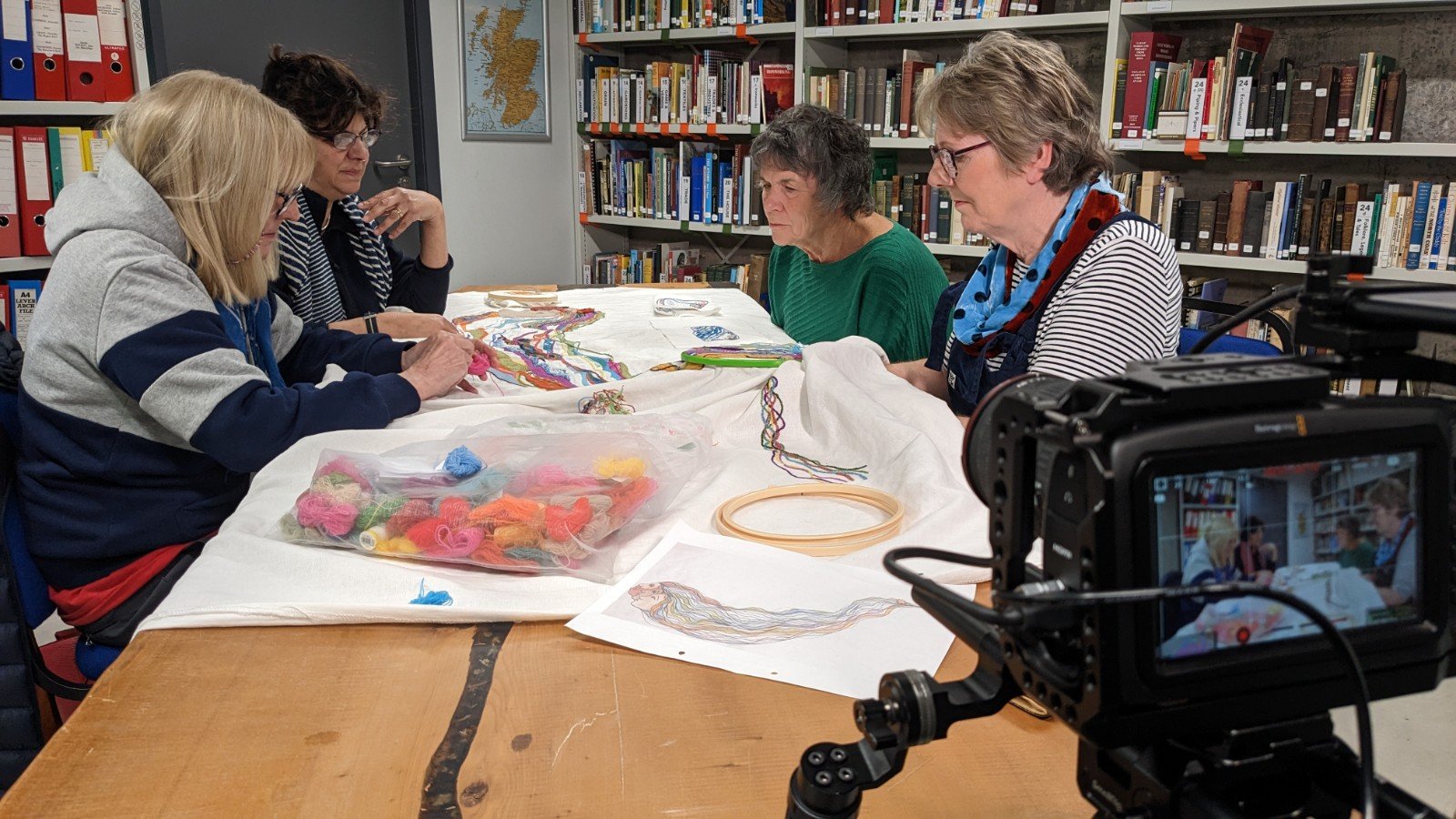
The Tapestry of the Highlands and Islands is being delivered by High Life Highland, in partnership with The Highland Council and VisitScotland, to showcase the unique natural and cultural heritage of the Highlands and Islands through community art. The Spirit of the Highlands and Islands project is supported by a grant from the Natural and Cultural Heritage Fund (NCHF), led by NatureScot and funded by the European Regional Development Fund (ERDF).
We hope that Curio’s trip to the Scottish Highlands and Islands to capture and showcase all these communities’ hard work and beautiful results will support the project’s visibility – and accessibility – showing its importance and impact in the region and beyond.
Learn more about how Zubr Curio was appointed to develop the digital interpretation of The Spirit of the Highlands and Islands project or contact us to discuss working together on a similar project.